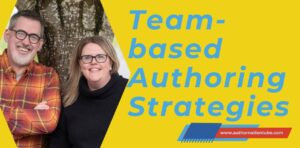
Engaging Visual Learners With Video Books: Redefine Reading Through Visuals + Audio + Text – How Michelle Blood Turned Near-Death Trauma Into a Learning Revolution.
Listen on Your Favorite Podcast Platform
Melody Ann hosts Michele Blood (pioneer of the world’s first video book) and tech strategist Holly Fallah to explore how engaging visual learners with video books revolutionizes nonfiction authorship. Are you curious yet? Listen in to start engaging visual learners with video books.
Learn why this multimodal format outperforms traditional books/audiobooks by combining music, visuals, and text to create immersive learning experiences.
What You’ll Learn About Engaging Visual Learners with Video Books
- Why video books are the next evolution in reading
- How to create your own video book
- Actionable strategies for engaging visual learners
About our guest
Michele Blood
Michele is a globally recognized author/speaker/musician with 80+ books/programs on subconscious reprogramming. She is the creator of Manifestation Through the Power of Mysticism – the first full-length video book and has collaborated with thought leaders like Bob Proctor and Deepak Chopra.
Holly Fallah
Holly is the tech architect behind Michele’s video books and affirmation apps. She specializes in transforming written content into cinematic experiences with Canva.

🌟 Episode Highlights
-
How Michelle’s near-fatal accident led to creating affirmation music.
Why they added dog-in-sunglasses clips and prosperity montages -
Behind-the-scenes workflow: Audiobook → Chapter breakdown → Visual pairing.
Pro tip: Use landscape-oriented videos for TV/desktop viewing
3 Immediate Actions To Help You Build Momentum In Engaging Visual Learners with Video Books
Create a 60-Second Canva Video Prototype
From Holly’s toolkit: Open Canva → Select “Video” template → Upload 1 paragraph of your book’s audio (use phone recording) → Pair it with 3 stock videos/images that match the mood.
Record a Raw Audiobook Chapter
Michele’s hack: Use Voice Memos (iPhone) or Audacity → Read one chapter aloud WITHOUT editing. Save as “Draft 1.”
Pro tip: “Your authentic voice connects deeper than any narrator” (Michele). Listen back to identify 2-3 sections where visuals would boost engagement.
Storyboard One Book Section
Pick a high-impact chapter (e.g., personal story/data chapter).
Divide it into 3 “scenes” (intro, key concept, call-to-action).
For each scene, jot down:
Visual metaphor (e.g., “rising graph” for growth)
Music vibe (e.g., upbeat vs. contemplative)
Example: Michele’s “Magnet to Money” chapter used dog-in-sunglasses clips to symbolize “fun prosperity.”
Recent Articles

Team-based Authoring Strategies | Keeping Your Focus While Writing
Unlock your writing potential with Team-based Authoring Strategies that enhance focus, collaboration, and creativity in your writing journey! Listen on Your Favorite Podcast Platform In

Universal Themes In Personal Storytelling Examples | Using Narrative to Deepen Understanding
Using Personal Storytelling to Deepen Understanding in Memoir Writing Memoirs naturally lend themselves to storytelling, but Michelle Obama’s Becoming goes beyond a simple life story.

Authors as Leaders of Change | Real Lives Retold
Listen on Your Podcast App Every author can change the world with their book. Authors as leaders of change is the topic of this episode

